How to taste wine:
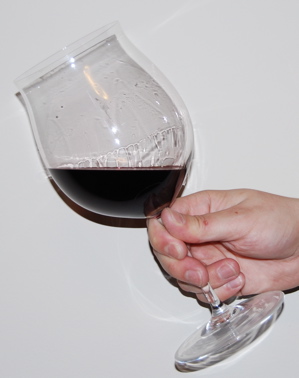 |
|
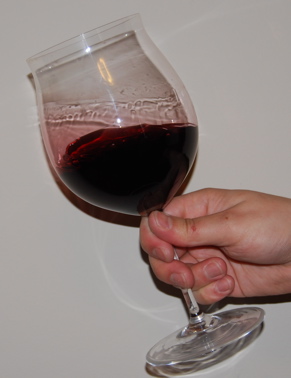 |
|
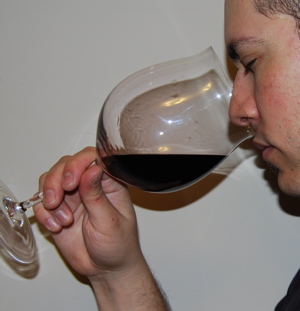 |
|
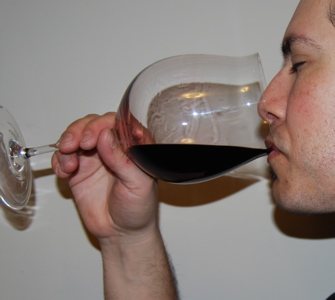 |
|
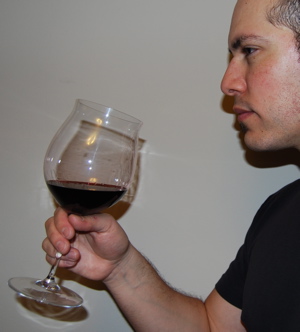 |
|
What Makes Wine Enjoyable
Each of us is evolving in our personal cultural experience. Perhaps you too have come to the place where you're ready to experience more adventure as a connoisseur. There is culture in wine. It can be found in the ritual of drinking it, appreciating the craft of the winemaker, and in the wine's stimulation to our taste buds. And now, let us pursue the pure taste enjoyment of wine.
When we drink wine, our taste buds are stimulated in a unique way and the alcohol has a calming effect on the brain. Human taste has four components: sweetness, saltiness, acidity and bitterness. The acidity and sweetness in wine are the two factors that balance together to produce a pleasant sensation on our sense of taste. We taste the acidity with the middle of the tongue and sweetness with the tip of the tongue.
Wines with excessive acidity taste harsh, those with insufficient acidity taste uninteresting and their flavor does not linger in the mouth long enough. Tannins contribute to the relationship of bitterness on the tongue. If you've ever chewed into grape seeds, then you've tasted the dry bitterness of tannin. Wine with too much tannin is unpleasantly bitter. The right level of tannin has an effect of bringing all the flavors together with a good "grip" in the mouth. The various fruit-like flavors detectable in wine contribute nuances to the sweetness we taste. It's fun trying to detect different fruit characteristics, such as berries, plums, apples, pears...
Our other senses are involved as well. Our sight enjoys the color and our sense of smell enjoys the fragrances. Much of a wine's character is revealed only through the aroma it exudes. This adds richly to the dimensions found in wine.
Grape Varieties
There are many species of grapes, but most of the world's wine is made from the Vitis vinifera family, of European origin. Wine grapes have various unique, signature characteristics. Check out the following varietal grapes:
| Popular Red Varieties | Popular White Varieties |
NEW How to Find Wines You'll Enjoy
- Get to know the wine areas. Start with a familiar new world region like Ontario, California, Australia or Chile. See the Wine Regions section to get started.
- Try some of top red and white varietals from each wine region and take notes as to which ones you like best and why. Pick them from the list in the box above.
- Get to know the old world wine areas. Start with France and Italy. Learn the top wine regions of each and the specific varietals each region produces.
- Get to know the specific wineries in each region that you like best.
This will take some time, but you'll find it to be an interesting and educational journey. You need to try a few different reds and whites from each region to get a sense of where your taste bud's interests lie. Your palate will also grow in sophistication and preferences as you continue to journey the world of wine!
In my opinion, most wine consumers need to move beyond Australian, Chilean and California wines. They're in your comfort zone, I know. But move beyond them to the more exciting wine areas: France, Italy and Spain. You'll discover history, pedigree and amazingly complex and interesting wines that will wow your palate. Be sure to get to know Bordeaux, the Rhone, and Chateauneuf du Pape. Don't stop or linger in one spot in your wine journey before you discover the charms of these fine French wine regions!
How Wine is Made
Wine grapes, Vitis vinifera, grow easily in any temperate to warm climate. A solution of sugar and water develops in ripe grapes and the skins easily allow the growth of natural yeasts. In the fermentation process, these single cell organisms consume the natural sugar and change it into ethyl alcohol and carbon dioxide. This rather simple process has been observed and used for thousands of years in human culture. In the past hundred years or so, technology and new ideas from winemakers have played an ever-increasing role in the making of wine. It's becoming more and more a science and an art.
Here are the basic principles of winemaking. The grapes are either harvested by hand (this is best), or with mechanical harvesters. Exposure to air should be kept to a minimum at all stages of the process. Sometimes powdered sulfites are sprinkled on the grapes prior to crushing to prevent too much reaction with the air. The fermentation usually takes place in open vats. Several processes may be employed to give the wine clarity: fining and filtration for example. Shortly after fermentation has ended, the wine is transferred to a settling tank where filtration and other clarification techniques may be used.
The Differences Between Red Wine and White Winemaking
There are significant differences between red wine and white wine production. Basically, red wine is the outcome of crushed, fermented grapes. White wine is the outcome of fermented grape juice (that is, no skins or meat of the fruit). Blush wines, out of interest, are made from red grapes that are made into wine as though they were white grapes. The red grape skins add a bit of color and nutrients to the juice being made into blush or rosé, leaving a slight blush of red in the wine.
Red Wine
All grapes contain the same kind of green fruity-meat, but red grapes have red skins and in the winemaking process, there is a considerable amount of color, flavors and tannins that are imparted to the final product. After crushing, the red grapes, skins and all, sit in a fermentation vat for a period of time. Picture a huge plastic bin with a mixture of crushed grapes and juice with a layer of crushed wet skins on top. The skins tend to rise to the surface of the mixture, forming a layer on top. This top layer is frequently mixed back into the fermenting juice (called must). After fermentation has stopped, about one to two weeks later, the new wine is drawn from the vat. A bit of "free run" juice is allowed to pour and then the remaining must is squeezed, yielding "press wine". The wine is clarified and then transferred to oak aging barrels so that it may mature. When the winemaker considers the wine ready, it is transferred to bottles and labeled.
White Wine
Right after picking, white grapes are put into a crushing machine. In the process, the skins are separated from the juice, an important difference over the red wine process. Some adjustments are sometimes made to the acid or sugar levels at this stage (the addition of sugar is called "chaptalization"). The clarified juice is then ready for fermentation.
Yeast is then added to the juice for fermentation. Before long the white grape juice becomes white wine. At this point, some further tinkering is usually called for: filtering, and perhaps the addition of sweeter juice to round out the flavor. The wine is then aged by storing in oak or stainless steel containers, and after a few months, it is bottled.
Information about Wine Producing Countries
Start here to visit several of our favorite wine regions.
Wine Glossary
Get to know wine terms here. For info on Grape Varietials, click here.
Acid: An aspect of taste in a wine. Sometimes described as sour or tart. The taste buds that detect acid are on the sides of the tongue. The acidity of a wine is an important component that should be in proper balance. Proper acidity provides crispness and life to the wine.
Appellation: The specific area a wine comes from. It can refer to a region, such as Bordeaux or Burgundy in France, for example. It can refer to an even more tightly defined sub-region within, say, Bordeaux, such as The Médoc.
Balance: Harmony or "being in tune" among the various components of wine, fruit, tannins, alcohol and acidity.
Big: A wine that is powerful in flavor or tremendously harmonious in how it presents its components (see "balance") can be called big. You can also use this term if you just really really like the wine!
Body: The texture and weight of a wine. The more substantial and flavorful a wine tastes, the more body it has.
Bordeaux: The most important wine region in France. Wines from this area are called "Bordeaux". Red wines from Bordeaux are primarily blends of Cabernet Sauvignon, Merlot and Cabernet Franc. White wines from the region are usually blends of Sauvignon Blanc and Semillon.
Bouquet: The array of aromas in a wine. Also known as "the nose".
Brut: Refers to dry Champagne or Sparkling Wine. The authorities in the Champagne region of France use this term to denote added sugar.
Cava: The name for Sparkling Wine (similar to Champagne) from Spain.
Chablis: White wine from the Chablis area of France. Made from Chardonnay grapes.
Champagne: An important region of France, most known for its production of the only sparkling wine that can truly be called Champagne. The méthode champenoise was invented there.
Chewy: A way of describing especially thick texture and/or tannins in red wine.
Claret (Clairet): In England, "Claret" refers to English-style Bordeaux or wines from Bordeaux. In France "Clairet" is a particular Bordeaux that is produced like red wine but the must stays in contact with the skins for the first 24 hours during its making.
Complex: In wine-speak, this is a positive term, referring to lots of different flavor and aroma components in a wine.
Dry/Off Dry: Little or no sugar = "dry", slightly sweeter = "off dry".
Fruit: A key quality in wine; the winemaker's goal is to capture the true essence of the varietal.
Icewine: A special wine produced by leaving the grapes on the vine until they are well frozen. They are then hand-picked and immediately pressed, while still frozen. The frozen must is then fermented and aged in barrels. Icewine is thick and sweet with rich and complex flavors.
Late Harvest: Indicates grapes that are picked as late as possible in the season for maximum sugar content.
Malolactic: Often used in the making of Chardonnay; an additional fermentation that turns malic acids into lactic acids. Compare apples vs. creamy vanilla.
Oak: Wine is often aged in oak barrels to add that distinctive "oaky" flavor. The process can add a hint of vanilla and butter to whites and tobacco, coffee or simply "oak" flavor to reds.
Sauternes: An elegant sweet dessert wine from Bordeaux France. Also the name of the commune within Bordeaux. The main grape varieties in this wine are Semillon, Sauvignon Blanc and Muscadelle. The grapes are hand-picked in 5 to 6 passes, having been left on the vines much longer than normal. In addition, due to ideal conditions that exist partly due to the nearby Garonne river, noble rot sets in (botrytis). These factors give the wine its distinctive flavors and sweetness. It is usually aged in French Oak barrels, often for 12 to 24 months. This is a sophisticated dessert wine and an excellent alternative to Icewine or a Late Harvest.
Tannin: This taste sensation comes from seeds, stems and skins of grapes, imparting a "pucker" to the taste as well as complexity and structure.
Varietal: Refers to wine made from a specific grape variety like Cabernet Sauvignon, Merlot or Chardonnay.
Variety: Refers to a specific type of grape that when made into wine becomes a varietal, as in Cabernet Sauvignon, Merlot or Chardonnay.
Vinifera: Premium wine grapes.
http://www.wineandleisure.com/wine101.html ...check it out!!!